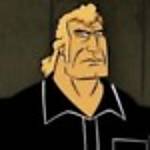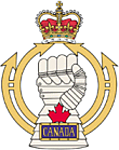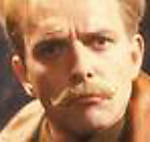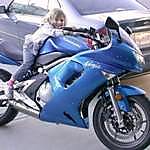Moving forward with the hull front there are lots of details to add.
I've broken down the majority of the part additions with images showing the specific part placements.
Starting off is the horn. A simple well detailed resin piece. Placement should be in line with the inner right headlight and above the cable port.

Next is the horizontal resin bar for the engine hatch hinge. I would recommend cutting this piece long and then trimming and sanding it down to fit perfectly.

The driver's hatch interior gets a splash of detailing with a brass wire handle. I used the supplied 0.3 mm brass wire bent with a Grabhandler tool to form the handle shape. There are pre-drilled holes on the hatch interior to assist with placement.

The trim vane gets detailed with a PE licence plate, a spare road wheel, the trim vane release, and the rectangular bracket. These parts all fit into the existing kit trim vane with little to no issue. The road wheel was normally held in place with a simple bolt. There is no mention of this in the conversion so one will simply have to be added.

On the left upper hull the fire extinguisher pull handle and the GPS antenna is added. The GPS antenna simply attaches to the existing antenna mount base plate. The GPS antenna was an add-on to the TUA. It was not mounted on the original TUA nor TUAs with UNPROFOR, IFOR, or SFOR. I am not sure if the GPS antenna was on KFOR era (1999/2000)TUAs but it is likely part of the TCCCS upgrade from the early 2000s.

The standard M113 style antenna guard is provided in five PE parts and can be a bit tricky to align, assemble, and attach. There is a slight bend to the main guard part. Once in place small bolts/nuts can be added with sprue and bolts of your choice.

Jumping back to the hull front and looking down the final drive housings wear bars are provided in PE. The wear bars were made of an aluminum alloy and standard on all Canadian M113s. Prominent weld beads are a common sight around the outside of the wear bars and would be easy to add with sprue.

On the left lower front hull spare track links are added. In the instructions it shows four track links attached to the glacis plate. I have seen anywhere from two to four track links attached in this location. The inaccuracy in the instructions comes from the use of standard M113 tracks instead of the Diehl tracks used on Canadian M113s. On Canadian M113s there are four post mounts used to hold the track links in place. The tops of the posts are tapped to receive attachment bolts and washers. The posts were not included by Legend in the conversion and I was quite surprised by this as it is a very recognizable feature. Some well placed styrene posts will solve this problem. To show the correct placement of the spare tracks I used two links from a set of plastic HKCW M113 Diehl tracks. I did not scratch the mounting posts for the review build. If the mounting posts were added the PE washers would be added on top of the posts to replicate the bolt/washer combo.

On the top of the trim vane release attaches a small resin pull handle. Be careful with this piece and you may confuse it with the C6 GPMG barrel!

Two mirrors are added to the upper hull sides. The brackets are provided moulded on the hull and should be drilled out to receive the wire arms. The mirrors themselves clean up easily. On the TUAs the mirrors used are the same as on the Leopard 1. They can be seen with the rubber shroud or without as provided in the kit. I used the conversion supplied 0.5 mm brass wire to form the mirror arms. It will be your discretion as to placement or if you want to attach the mirrors to the arms themselves.

On the hull top two great looking PE engine grills are provided. These PE parts fit like a glove and add a great dimension to the details of the conversion.

The turn signals are a feature unique to Canadian M113s and have evolved over the years. On the TUA the larger taillight style is used with a rounded guard. The turn signals are very nicely cast in resin. A small PE mount is provided and must be bent carefully so that when attached to the glacis plate the vertical portion sits 90 degree to the ground. The resin lights attach to the centre and two resin bolts are attached to the base portion. The rounded guards must be bent to shape and I used my Mission Models multi-tool to get a consistent bend. The rounded portion must be the same size as the base attached to the hull. On the real TUA wires extend from the back of the mount and attach to socketed leads from the main headlights.
Placement of the mounts is very important. There are no guidelines on the hull and Legend provides images in the instructions. Reviewing my TUA references I used a measurement of 18 millimetres from the bottom edge of the resin hull to the bottom of the mount attached to the hull to gauge placement locations.

I have not yet attached the headlights, the IR lights, or the black out drive light. In preparation I did drill out the attachment mounts provided on the resin hull. In reality the mounts are a bracket attachment but these will do just fine.

In summary, all of the details added during this portion except for the GPS antenna are standard to all TUAs. Depending on the TUA an actually antenna mount could be seen mounted on the base plate instead of the GPS antenna on earlier TUAs.
Slowly but surely the hull is taking shape with TUA details. Next up will be the headlights and guards, the wire cutters, and more tie downs!
















































































































